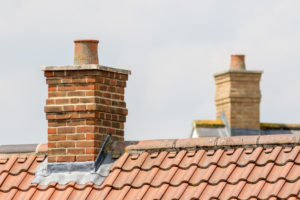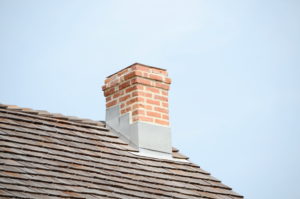




Answer: If you are planning on boarding up your chimney because you no longer wish to use it, make sure that the flue is swept and is as clean as possible before boarding it up. Any soot that is left in your chimney contains hygroscopic salts which attract moisture through osmosis from the atmosphere. These salts will make the chimney damp and smelly and can impregnate the masonry leaving you with a permanent problem. An unused chimney should also have a source of ventilation to prevent condensation.
Answer: If you can smell smoke in other rooms when your fire is lit, it is likely that your flue, which is the pipe running up inside the chimney, is leaking. It is important to remember that the inside of your chimney is liable to degrade with age and use in much the same way as the external structure does.
It is recommended that to protect the integrity of the internal structure of your chimney or flue and to ensure that it is safe to use that you have it professionally lined.
Answer: If your chimney is constructed from brick, the bricks may degrade and crumble over time and it is possible that the mortar in between the bricks will degenerate as well, causing them to come loose and fall into your fireplace.
Smoke will travel most efficiently through a smooth flue, so to get the best performance from your open fire or multi-fuel stove or wood burner the smoke needs to exit via the flue as quickly and smoothly as possible.
Any lumps and bumps caused by the uneven bricks on the way up through the flue will slow down the flow of the smoke. The smoke will cool and leave deposits on the side of the flue which can be dangerous as a build-up will quickly occur and increase the risk of a chimney fire.
The disintegrating flue may also leak smoke into other rooms within your property.
Any sign of degradation of the internal brickwork means that your chimney will have to be lined before it is safe to use.
 Answer: Chimneys can suffer from damp for a number of reasons – rainwater getting in, condensation and the presence of hygroscopic salts.
Answer: Chimneys can suffer from damp for a number of reasons – rainwater getting in, condensation and the presence of hygroscopic salts.
Salts from the smoke that passes through the flue can be deposited in the internal masonry – this often happens in older properties where the fire would have been used regularly many years ago. As a result, the masonry builds up a level of salt which attracts moisture from the atmosphere through osmosis which causes damp to appear around the chimney.
The effect of hygroscopic salts can be experienced whether the chimney and flue are in use or not; they can also be worsened if a flue has been made redundant by being sealed off at one or both ends without effective ventilation.
Answer: There are various different causes of damp in a chimney stack including the following:
The Chimneystack – an open-topped chimney stack can allow rainwater to trickle down into a flue. An unused flue can be capped to stop rainwater getting in – it does have to be well ventilated though to prevent a build-up of moisture.
Guttering – any guttering located near a chimney stack that gets blocked up with leaves and other debris could overflow and cause water to run down the adjacent wall and enter via any cracks in the mortar work.
Mortar – if the mortar used to seal the bricks of your chimney stack together is cracked or crumbling, water can enter the chimney.
Lead flashing – the seal where the roof joins your chimney stack is covered with lead flashing. If it is coming apart or there are any cracks, this is a possible entry point for water.
A blockage in the flue – anything in the flue that might prevent ventilation and also act as a sponge for water entering a flue such as a birds nest or rubble, can contribute to damp.
Condensation from a boiler or appliance – can also cause damp in a chimney
Shared chimneys – It is not unusual for a chimney to contain more than one flue and each flue will serve a different fireplace. If you share a chimney with your neighbour, it would be useful to find out if they have had any work done to their flue which may have impacted on your flue.
Identifying the cause of damp in chimney may not be straightforward. The signs of damp may only appear during certain prevailing weather conditions – e.g. a combination of wind and rain coming from a certain direction. Or it may be a combination of causes that are contributing to the damp – problems with lead flashing and condensation from a boiler for example.
Answer: There are various things that can be done to reduce or eliminate the presence of damp in a chimney.
Clearing any blockages in a flue and ensuring a suitable level of ventilation are both critical to maintaining a flue. Regularly reviewing the condition of guttering, mortar and lead flashing around a chimney will all be beneficial.
If you would like to speak to us about any chimney problems that you might have, please contact us at info@turnerbaker.co.uk or call on 01432 839123.
// ]]>



